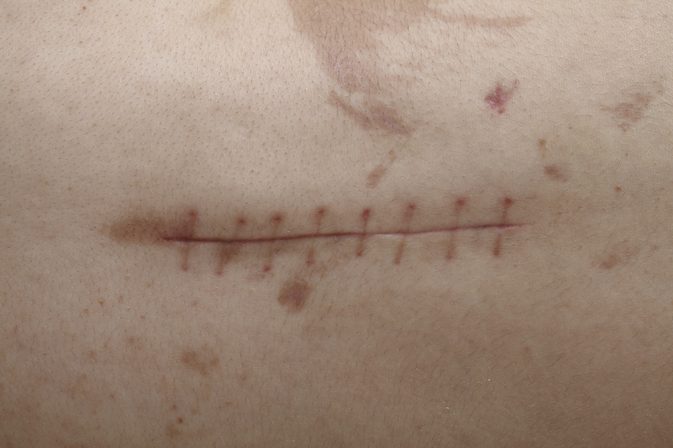A scar is a mark left on the skin after a wound or injury has healed.
Scars are a natural part of the healing process. Most will fade and become paler over time, although they never completely disappear. A scar can be a fine line or a pitted hole on the skin, or an abnormal overgrowth of tissue.
Types of scars:
Normal fine-line scars – A minor wound like a cut will usually heal to leave a red, raised line, which will gradually get paler and flatter over time. Fine-line scars are common following a wound or after surgery. They aren’t usually painful, but they may be itchy for a few months.
Keloid scars – A keloid scar is an overgrowth of tissue that occurs when too much collagen is produced at the site of the wound. Keloid scars are raised above the skin and are red or purple when newly formed, before gradually becoming paler. They’re often itchy or painful, and can restrict movement if they’re tight and near a joint.
Hypertrophic scars – Like keloid scars, hypertrophic scars are the result of excess collagen being produced at the site of a wound. Hypertrophic scars are red and raised to start with, before becoming flatter and paler over the course of several years.
Pitted or sunken scars – Some scars caused by skin conditions, such as acne and chickenpox, can have a sunken or pitted appearance. Pitted scars, also known as atrophic or “ice-pick” scars, can also occur as a result of an injury that causes a loss of underlying fat.


